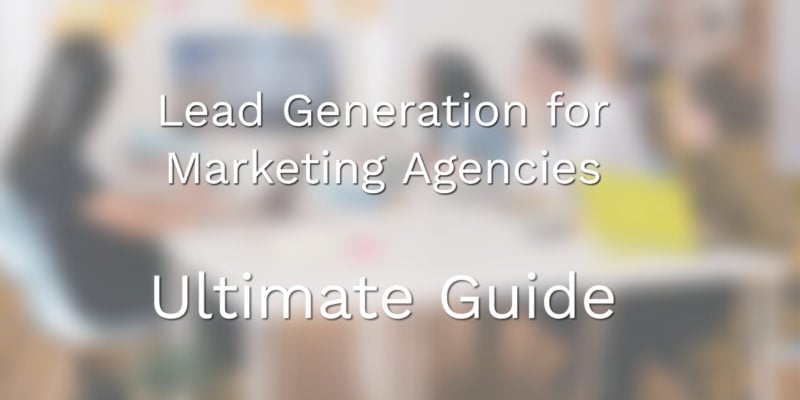You’ve just signed a big client for your marketing agency. Everyone on the team feels energized, the deal looks promising, and you can’t wait to get started. Then it hits you: “Where will the next client come from?”
Many agency owners live in this cycle. You might have tried cold outreach, LinkedIn messages, or several other tactics. Sometimes they generate a handful of leads; other times they don’t. It’s unpredictable and unsettling.
That is why a more stable strategy can help. You want something that fits your agency’s strengths, addresses real client challenges, and sets you up for ongoing success. By the end of this guide, you’ll have a framework that attracts the right clients consistently, instead of chasing leads with mixed results.
Step 1 – Define Your Ideal Client Profile (ICP)

If you’re not clear on who benefits most from your services, you could be targeting the wrong audience. That often leads to wasted time, wasted budget, and difficult client relationships. Defining your ICP involves more than picking a broad industry. It means knowing the core motivations, day-to-day obstacles, and long-term objectives of your best clients.
Going Beyond Simple Data
Take a moment to consider how revenue goals and company size affect the client’s challenges. A small SaaS startup targeting $3M in annual revenue faces different obstacles than a mid-market business pushing $30M. Pinpointing where your ideal clients fall on this spectrum helps you address concerns such as tight budgets, limited personnel, or accelerated timelines.
Some might focus on boosting free trial signups or fighting a high churn rate. Others might worry about justifying marketing spends to upper management. Identifying these specific pain points ensures your outreach and content speak directly to the problems that keep them awake at night.
Decision Makers and Their Motivations
It’s crucial to know if you’ll be dealing with a Head of Marketing, a Chief Marketing Officer, or a Chief Financial Officer. One might emphasize bold new campaigns, while another wants strict ROI proof. Tailoring your approach to their viewpoint can make your proposals far more appealing.
Goals and Objections
Think about what your ideal client wants—maybe a rapid jump in revenue or a plan for ongoing growth. They could have concerns over budgeting, internal resources, or the feasibility of scaling quickly. This knowledge helps you respond to them effectively.
How to Pin Down Your ICP
- List Your Top 10 Clients: These are the clients who pay well, appreciate your work, and rarely cause stress. Naming them helps you outline the kind of partnership you want to replicate.
- Ask Meaningful Questions: Which industry patterns do you see? How large are their teams and budgets? Who exactly said “yes” to your proposal, and were there others in the background? Which hurdles pushed them to seek your help? What short-term and long-term goals did they mention, and what objections came up?
- Identify Overlapping Threads: If you notice that many of your best clients have 50–200 employees and a common issue like churn reduction, that’s a clear sign of where your strengths match their needs. Those insights shape your outreach and refine your messaging.
Step 2 – Create a Lead Magnet That Solves a Specific Problem

Once you understand who you’re aiming to help, the next step is creating a resource they will consider genuinely worthwhile. This might be an eBook, a comprehensive guide, or a short video series. The main idea is to focus on one major issue your ICP faces. That kind of focus makes your content stand out, rather than blending in with generic materials.
Zero In on One Major Concern
Think about what comes up most often in your sales calls. If everyone you speak to mentions churn, conversion rates, or struggles with ad budgets, pick one to explore in depth. That approach shows you understand a real-world problem instead of offering a vague overview.
Showcase Depth, Not Just Surface Tips
Rather than sharing quick bullet points with little context, dive into real scenarios. If the topic is churn reduction, go beyond “send a welcome email.” Talk about the onboarding process, user-engagement tactics, and how pricing might affect churn. Tangible detail proves you’ve seen the problem up close.
Tools Like Designrr.io
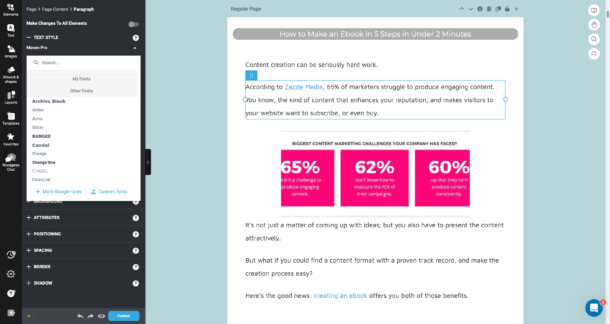
This platform helps transform your existing content into a polished eBook or flipbook. It also has AI-assisted writing and transcription tools for turning videos, webinars, or interviews into written materials. That can speed up the process of assembling a high-quality lead magnet that resonates with your audience.
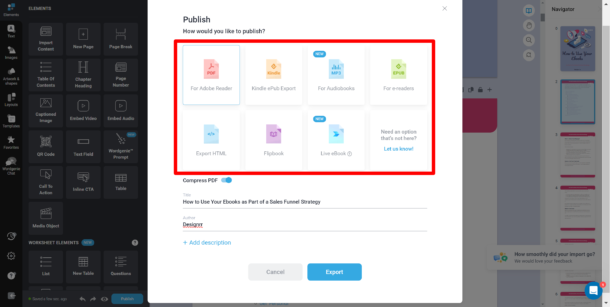
How to Build Your Lead Magnet
- List Common Pain Points: Think about the issues that pop up again and again during client calls. They might involve Facebook Ads performance, onboarding tweaks for a SaaS product, or ways to measure content marketing ROI.
- Pick a Single Issue: Zero in on one challenge, like boosting retention, lowering acquisition costs, or improving lead quality. That single-topic approach often feels more focused and valuable.
- Select a Format: Decide if an eBook or whitepaper, a detailed guide, or a short video series will best communicate your ideas. Some audiences love reading, while others prefer quick videos they can watch on the go.
- Use Designrr.io (If It Fits Your Workflow): This platform can handle formatting tasks, help with transcription from existing videos or audio, and compile everything into a well-designed package.
- Design a Landing Page: Summarize the main benefit of your resource in a headline. Mention the specific problem you address—something that immediately grabs attention. If it’s about cutting SaaS churn, say so clearly.
Example – eBook on Churn Reduction
A guide that explains why users leave, offers concrete solutions, and shares real metrics from past clients can demonstrate your expertise. When a visitor signs up for it, they reveal a genuine interest in solving churn. That makes them a promising prospect, not just a casual onlooker.
Learn how to create stunning lead magnet with Designrr in 10 simple steps
Or click the following link if you want to learn more on how to create a whitepaper for your agency.
Check out Designrr’s special offer today!
Step 3 – Promote Your Lead Magnet Through Targeted Channels
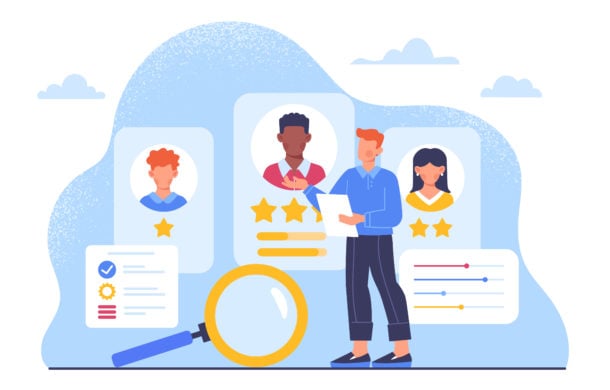
A valuable lead magnet doesn’t help if no one sees it. Some agencies blast ads on every platform they can find, which can lead to wasted budget. Focusing on the channels where your ICP is most active lets you reach those who already want what you offer.
Where to Place Your Focus
LinkedIn Ads
This platform gives you the option to target professionals by industry, company size, and job title. If your ICP involves B2B tech firms, LinkedIn can be a strong choice. Craft an ad that names the specific pain point your eBook or guide solves.
Facebook Ads
Target users based on interests or behaviors relevant to your ideal clients. If you work with e-commerce brands, aim for those who follow online business pages or who list certain job roles.
Google Ads
People who type something like “reduce SaaS churn” are actively looking for solutions. That intent can lead to higher-quality leads. Focus on precise, long-tail keywords so your ad reaches those who want a tailored approach.
Partnerships
Sometimes, working with a complementary business can be fruitful. If you handle SEO for e-commerce, find a Shopify app developer who can share your lead magnet with their audience. Both parties benefit when you share credible resources.
Email Outreach
Personal messages still work well, especially if you reference a specific challenge the recipient faces. Mention your lead magnet as a potential fix, rather than a generic marketing pitch.
Test and Refine
One channel might look perfect on paper but produce poor results in practice. Another could surprise you with excellent leads. Keep an eye on lead quality and cost. Continue with the platforms that yield the best matches for your ICP and pivot away from those that don’t.
Step 4 – Nurture Your Leads With Targeted Email Campaigns
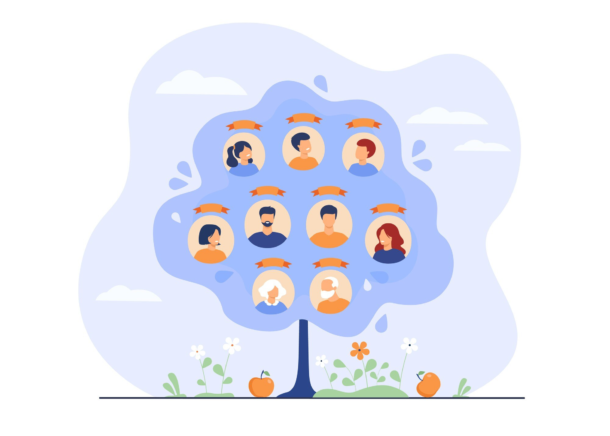
Once people sign up for your resource, they’re not automatically ready to hire you. Building a true connection often requires a measured sequence of emails that show your expertise and understanding of their problem.
Develop a Relationship Over Time
- Welcome Email: Send a brief note right after they download your resource. Confirm they got the material, introduce your agency in a simple way, and mention that more insights are on the way.
- Educational Follow-Up: Over the next couple of weeks, expand on what they learned. If your lead magnet covers churn, share short examples or tips that didn’t fit in the initial guide. Show them you have more in-depth knowledge.
- Case Studies: Real-world results often speak louder than generic claims. If you helped a client cut churn by 20% in three months, explain the approach and the impact it had on their revenue. That kind of story builds trust.
- Consultation Invitation: After delivering enough value, propose a quick call or strategy session. Make it clear that you’ll look at their specific metrics or needs. That personal touch can turn a curious lead into a paying client.
Sample Timeline
- Day 1 – A prompt welcome email linking the new subscriber to your resource.
- Day 3 – A short success story about a client who overcame a similar challenge.
- Day 7 – A deeper dive into metrics or best practices your lead can try on their own.
- Day 10 – A concise checklist that helps them see opportunities for improvement.
- Day 14 – An invitation to schedule a call for personalized recommendations.
Segment your audience if you cater to multiple niches. SaaS and e-commerce leads may want different sets of examples and resources. Tailoring messages makes your expertise more believable.
Step 5 – Analyze and Optimize Your Results

Measuring each stage of this pipeline reveals what’s working and what isn’t. Some areas may perform well, while others stall. Monitoring data pinpoints where to make adjustments.
Which Metrics Matter Most
Opt-In Rate
This is the percentage of landing page visitors who sign up. A low rate could mean your headline or copy doesn’t connect with the audience’s pain points. A stronger focus on the actual benefit might fix that.
Email Engagement
Open and click rates reveal how interested people are in your content. If opens are low, change your subject lines. If clicks are low, look at the body of your email—maybe it lacks clear calls to action or feels unrelated to what they signed up for.
Consultation Bookings
Plenty of opens and clicks won’t matter if nobody schedules a call. Try clarifying the call’s value. Show them what they’ll gain from a live conversation, such as a personalized strategy or a unique audit.
Conversion Rate (Leads to Clients)
This is the ultimate goal. If you’re getting lots of conversations but no deals, review the entire process. Perhaps the leads like your content but see a mismatch in pricing or timelines. Feedback from these calls can be invaluable.
Read the following article on key Lead Magnet metrics you should track
Ongoing Adjustments
Analytics tools such as Google Analytics or a CRM help reveal drop-off points. If a particular email sees a big dip in engagement, experiment with new content or a different approach. These small, continuous changes often lead to better overall performance.
Conclusion
Securing a steady flow of high-quality leads isn’t a matter of chance. It starts with defining who you serve best, creating a lead magnet that tackles a problem they urgently need to fix, offering it where your ideal clients spend time, then following up with helpful emails. Data from each step shows you what resonates and what needs fine-tuning.
This path might take more effort than random cold outreach, but it pays off in consistency. You won’t be guessing where your next project is coming from because you’ll have a process that brings well-qualified prospects straight to your door. Put these steps into practice and adjust them as you learn. Before long, you may find your agency pipeline running more smoothly than ever.
